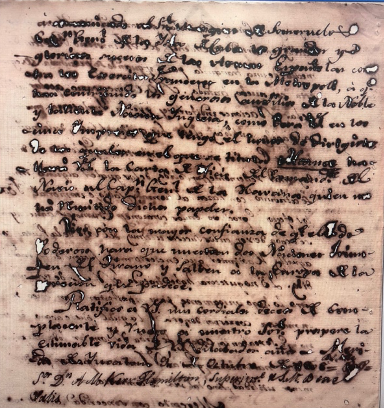
Jacqueline Ly, Ph.D. Candidate, History
I received a generous grant from the Latin American & Iberian Studies Travel Award Committee, made possible by Council on Latin American & Iberian Studies of the Whitney and Betty MacMillan Center for International and Area Studies. The grant, to the amount of $500, helped me to defray the cost of travel during my preliminary dissertation research in the Summer of 2018. My multi-site itinerary required multiple flights and other modes of transportation, and this grant was vital in making my summer research viable.
My research goal for this past summer was to travel to local archives pertaining to my topic (specifically in the Caribbean region) in order to determine whether these archives would be viable sources for my eventual dissertation. I had been previously acquainted with the imperial British and Spanish archives in London and Seville, respectively, and I wanted to use this summer to explore, specifically, the Archivo General del Estado de Yucatán (AGEY) and the Archivo General del Arquidiócesis de Yucatán (AGAY) in Mérida, Mexico; the Archivo General de la Nación (AGN) in Mexico City, Mexico; The Jamaica Archives (JA) in Spanish Town Jamaica; and the Belize Archives and Records Service (BARS) in Belmopan, Belize.
In the Mexican archives, I expected to find correspondences between local Spanish authorities in the Yucatán region. They would have been on the front lines of interacting with the British loggers, and I was hoping to find letters complaining of the hardships of their conditions and requesting more support from the Viceroy in Mexico City or the Crown of Spain. In Jamaica and Belize, I was looking for British records. Jamaica was the unofficial overseer of Belize during the ambiguous period before Belize became a British Crown Colony. Therefore, I was hoping to find dispatches and letters among Jamaica, Belize (then known as British Honduras), and London that would shed light on daily occurrences and preoccupations among residents in British Honduras. I planned to spend two weeks in Mexico, one week in Jamaica, and one week in Belize to fulfill my reconnaissance work in the archives.
Before I booked my research travel, an upper-year colleague recommended that I reduce the total amount of research sites. From his experience, he informed me that archives, especially smaller ones like the ones I was planning to visit, often yielded unexpected delays because of the lack of infrastructure or problems with access to documents. Therefore, he recommended that I was better off going to fewer locations, but spending more time in each. The most challenging logistical aspect of my trip planning was finding a cost-effective way to schedule my flights. There are not many flights into Belize or Jamaica, and there are no direct flights between the two. Furthermore, because there were so few direct flights, the elongated itineraries became quite expensive. In the end, it cost me less (in a couple cases) to book my travel from the US to Mexico, from the US to Belize, and then from the US to Jamaica. The difficulty of traveling between locations that are geographically proximate, simply because of their peripheral status and the low demand of travel to/between these locations was eye-opening. I was experiencing first-hand the complications that conceptual distance imposed on peripheral spaces.
In the end, I was able to spend over one week in Mérida, where I visited both the AGEY and the AGAY. The AGEY had a few interesting criminal cases that involved enslaved black loggers who had escaped over the northern border into Yucatán and some letters referring to the years immediately after the Spanish and British allied to defeat Napoleon. There were few documents pertaining to the eighteenth century other than a few Royal Orders. Most of the documentation available began in the nineteenth century, and even of those, few pertained to the British Honduras region. I found fewer documents at the AGAY, and the problem was, again, periodization. The archivists in both locations informed me that there were few documents from the eighteenth century and earlier remaining in these archives, because before recent renovations and conservation efforts, many documents had been damaged in hurricanes, floods, and fires in the past. I have found, also, that documents pertaining to and coming out of British Honduras are in especially bad shape, usually heavily damaged by water. My experience reflects what sociologist O. Nigel Bolland has remarked about documents on British Honduras: there were few documents to begin with, and many have been lost or damaged in the swampy environment.
In Mexico City, I did not have time to delve into the archive, as I was only passing through (the only way to fly to Mérida is to fly through Mexico City). However, while I was in town, I was able to speak with my colleague who had been working in the AGN, and I learned about the structure and systems at the archive there. I’ve learned that the AGN only pulls ten expedientes per day, so this is valuable information to keep in mind when I plan my travel during my research year.
I traveled to Jamaica for almost two weeks. I spent one day in the National Library in Kingston and the rest of my days in the Jamaica Archives in Spanish Town. The National Library held some interesting volumes, some of which were printed in the nineteenth century. Jamaica did much of the publishing for British Honduras, so it was encouraging to see some of the volumes that pertained specifically to that region. I transcribed books that did not exist elsewhere and took down the catalog information of volumes that did so that I could follow up on them upon my return. At the Jamaica Archives, I had a harder time finding what I needed. There was one folder that held documents pertaining to British Honduras before 1800, and within that folder, there were only a few documents that were not duplicated at The National Archives (TNA) in Kew. I found that localization of documents did not occur in bulk until after 1866, when Jamaica became a Crown Colony. Although I didn’t find the documents I had hoped to find, I learned an important structural detail about the archives in the British Commonwealth, and I can remove Jamaica from my list of prospective research sites.
In Belize, all of the documents are geographically relevant, as is to be expected. However, again, the pre-1800 records are sparse and damaged. Among the few things I found were a letter book and a book of Magistrates’ Minutes. Both revealed interesting details about major events like the Mosquito Shore Evacuation of 1786 and the final repulsion of Spanish forces at St. George’s Cay in 1789. Keeping in mind my archival experience in Jamaica, I was suspicious that these documents were duplicates of items in TNA. In order to remain efficient, I took a large swath of the documents, transcribing and summarizing broadly so that I have reference points for my visit to Kew the next time I embark on pre-dissertation research. With the Belize documents, I feel like I’ve come to a very good launching point for more fine-grained research in TNA. Having visited BARS, I now feel that I can more effectively parse through the multitude of papers in TNA and determine at a later date whether I’ll need to return to Belize.
The primary purpose of my summer research was to identify viable archives for future research visits. Although it was distressing to mark the Jamaica Archives off of my list, it was also necessary and fulfilled my goal of streamlining my planning of future trips. I also learned more about the categorization of archives within this region by visiting the local archives, and this knowledge will help me as I move forward with my dissertation. More importantly, I established good relationships with the archivists in each of the locations I visited, and in one case, the archivist connected me to another graduate student who was working on a similar region and time period. Through these connections, I believe I have a solid foundation from which to continue networking and engaging with other scholars in the field.
Gaining the local cultural experience outside of the archive was another crucial aspect of my summer research. It was an especially noteworthy experience being on the ground in Belize. I experienced a little bit of the hurricane season with sporadic torrential rains and violent storms, and I spoke extensively with my guesthouse host about her impressions of Belizean history. CLAIS emphasizes the importance of going abroad and gaining cultural knowledge of Latin America in addition to delving into the archives. More importantly, I now have contacts in Belize and the Yucatán and can better keep my finger on the pulse of scholastic developments outside of the North American academy. Scholarship depends on collaboration and building on the achievements and discoveries of others, and I am thankful to have had the chance to begin establishing the connections that will expose me to a wider array of thinkers.
My dissertation project is concerned with the social history of the logwood and mahogany industries in eighteenth-century Belize. Most of the sources for my project will be based in the imperial archives in London and Seville, but my hope is to write a new imperial history that foregrounds a peripheral space. I spent my summer in Mexico, Jamaica, and Belize at local archives in the region to test whether I would be able to find a viable source of local documents pertaining to my topic that could challenge and enhance the story that has gleaned from the imperial archives. I had a variety of outcomes in each of the locations, but I have learned valuable methodological and logistical information from finding and not finding what I needed.

El Zócalo, Mexico City
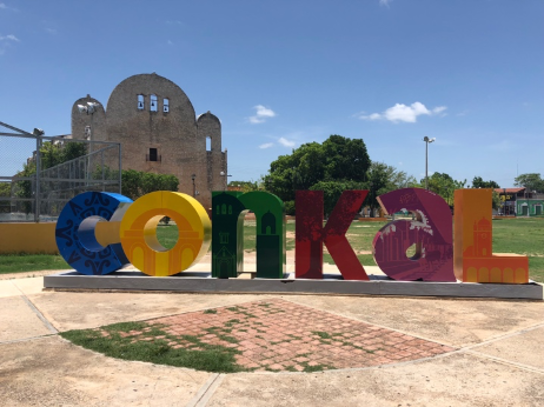
The AGAY is located in a small Mayan town called Conkal, located about 40 minutes outside of Mérida.

Chichén Ítza, Yucatán
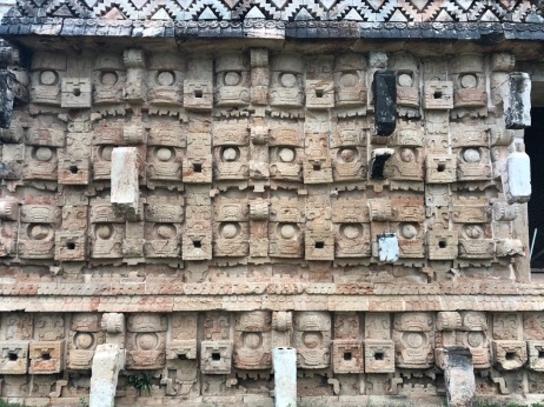
Labna, Yucatán: These were Puuc ruins, sites which pre-date the famous pyrmaid at Chichén Ítza. The detail and relief of the carvings that were still preserved was incredible.
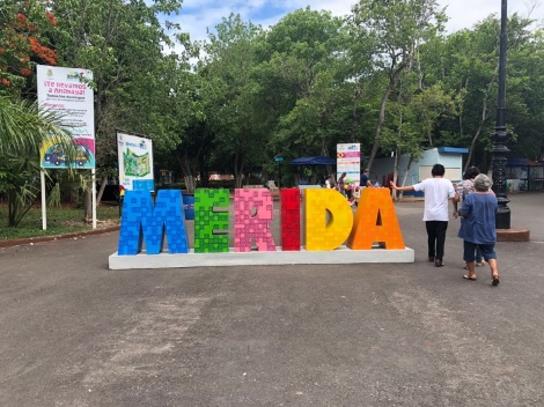
Mérida, Yucatán
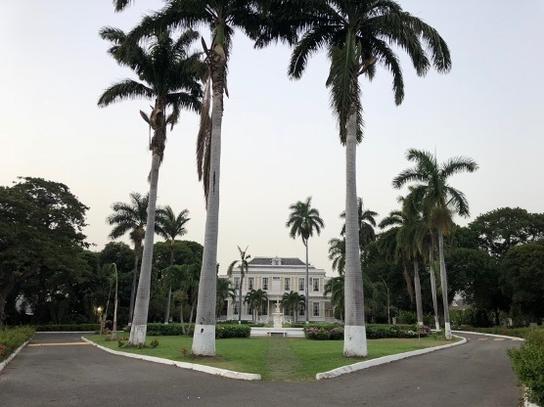
The Devon House in Kingston, Jamaica is an important site because it was the house of the first Black millionaire in Jamaica.

Jamaica’s Blue Mountains are known today for the premium coffee that is produced there, but the history of Jamaica’s mountains is much more complex, fraught, and rich.

Ocho Rios is a major cruise ship port. Comparing the town on cruise day, as opposed to a non-cruise day, was surreal.

The view from The Jamaica Archives in Spanish Town.
